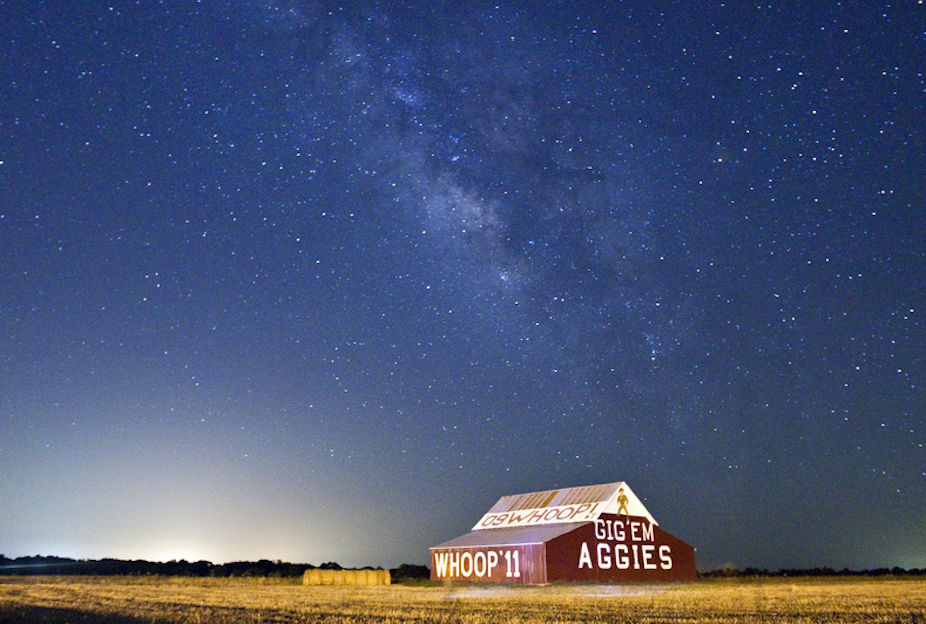Welcome to the third instalment of If I had a blank cheque … a series in which leading researchers reveal what they could (and would) do in their discipline if money were no object.
Today we hear from Geraint Lewis, Professor of Astrophysics at the University of Sydney.
Project: Build the Wide-Field Multi-Object Spectrograph
Cost: $100 million
Timeframe: Five years
Giving an astronomer a blank cheque is a dangerous thing to do: astronomy is now “big science”, where bigger is clearly better.
The possibilities are endless, from the just extremely engineeringly–challenging – such as the European Southern Observatory’s proposed Overwhelmingly Large Telescope (OWL), with a 100 metre mirror and a footprint as large as the Great Pyramid of Cheops – to dreams at the edge of science-fiction – such as using warp-drives to send out probes to directly experience the distant universe.
Such projects could be financially ruinous.
For this article, I’ve had to rein in my enthusiasm and put a limit on my blank cheque ideas. I have limited myself to realistic and practical uses for a blank, yet ultimately finite, cheque. I would spend my cheque on building WFMOS, the Wide-Field Multi-Object Spectrograph.
While the name is not too exciting, the concept really is. To understand its importance, we have to realise a fundamental problem with telescopes.
Simply put, the bigger we make telescopes, the smaller the patch of sky we are able to study in detail. In fact, the largest optical telescope we currently use, such as the ten-metre Keck and eight-metre Very Large Telescope (VLT), can only accurately image a region less than a tenth of the area of the full moon.
There is a way around this, by putting correcting lenses in front of the telescope to provide a clearer view over a larger area. While this sounds simple, these corrective optics are physically large and expensive to install.
By installing new lenses, the Hyper-Suprime-Cam on the eight-metre Subaru Telescope in Hawaii will provide the clearest, deepest image over an area larger than the full moon.
For astronomers, imaging is only one way of looking at the sky. Using spectrographs – instruments that measure the properties of light of different wavelengths – we are able to study colours in detail, revealing some of the universe’s mysteries: black holes in distant quasars; the life-cycle of stars in galaxies; and the chemical composition of exoplanets.

More than a decade ago, astronomers realised that the power to accurately image swathes of sky had to be coupled with the ability to undertake spectroscopy on myriad visible sources.
And so was born the concept of WFMOS, a powerful spectrograph on an eight-metre telescope that could obtain the light from almost 4,000 objects at once.
For the clearest view, WFMOS – which would be larger than a mini-van – would have to sit at the top, or “prime focus”, of a telescope.
While telescope structures generally aren’t built to support such weight, the mighty Subaru Telescope, with its excellent corrective optics, would be an ideal home for WFMOS.
International consortia were formed to examine this proposal, and two key science goals were settled upon: the search for the nature of dark energy, and galactic archaeology of our own Milky Way.
There would be many other scientific spin-offs and outputs, but these key questions would be the focus and scientific drivers of WFMOS.
Many telescopes are chasing the nature of dark energy, but galactic archaeology aims to answer a different fundamental question: how did our home galaxy grow over time?
Our current cosmological models suggest that it did not arise fully formed from the void, but grew through a complicated accretion of smaller systems, a process known as galactic cannibalism.
Using WFMOS, we would be able to study the detailed abundance of chemical elements in a large number of stars, uncovering which were born in the same cloud of gas, and how many were formed in distant dwarf galaxies that were eaten by the Milky Way.
We may find the Sun’s stellar sisters, and even discover it is an immigrant, born in a small galaxy that no longer exists. Answering such questions would give us an unparalleled view of where we came from.
Unfortunately, the cost of providing such detailed spectroscopy doomed WFMOS, and the project was cancelled in 2008. A new Japanese team has picked up the baton, and is planning to build SUMIRE, similar to WFMOS, but solely focused on the question of dark energy.
Galactic archaeology waits in the wings. There will be great strides in the coming decade, with HERMES on the 3.9-metre Anglo-Australian Telescope due to undertake a spectroscopic census of a million stars.
But to reach the distant regions of our Milky Way, and truly understand our formation, we will need a WFMOS stellar survey.
Many realise this, and plans are afoot. These include a complete rebuild of the highly successful 3.6-metre Canada-France-Hawaii Telescope, on Mauna Kea, into a 10-metre telescope dedicated to spectroscopy, including the galactic archaeology of the Milky Way.
Such programs, while being very exciting, are also very expensive, and I only hope that Australia can maintain is leading position in this important scientific field. With my blank cheque, I would build WFMOS and ensure this happens.
I have to think: given that the current estimate for air-conditioning for the US military in Iraq and Afghanistan is running at $20 billion per year, the idea of spending $100 million to advance our ideas of where we came from does not seem so extreme.
Come to think of it, the $10 billion for a 100-metre telescope seems an entirely reasonable goal for human endeavour, and even probes to the distant universe should not be ruled out as a goal for mankind.
Are you an academic or researcher? What could you do with unlimited funds? Contact The Conversation.

